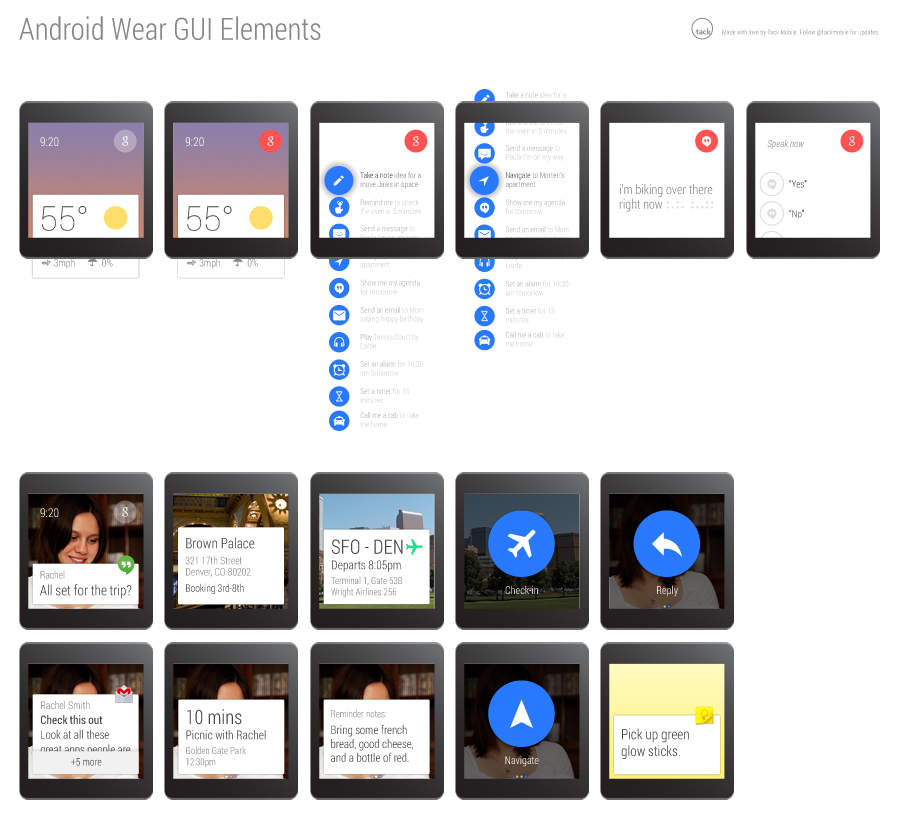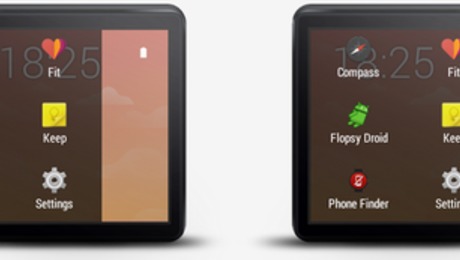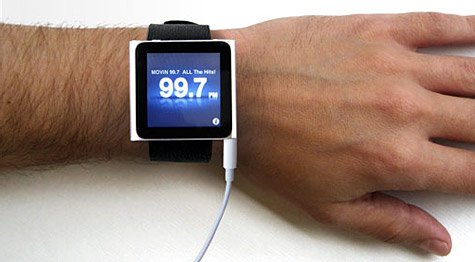Android Wear: What went wrong?
The first watches with Android Wear on board began to arrive on the shelves of Russian stores, collecting feedback from the press and the first customers along the way. What did we get? I consider this review from the notorious Eldar Murtazin to be indicative:
Even an experienced geeky journalist with a lot of addiction to wearable gadgets does not look at least a bit interested in a new class of devices from Google. As for the loyal Android first buyers? Also not very impressed with the acquisition: The

average users of tablets and smartphones apparently do not even look at Android Wear. What are the main problems of the watch?
- Problem One: A watch is useless to most buyers
The whole ideology of Android Wear is based on two things - Google Now and notifications from the phone. If you ever used Google Now, you noticed that the service only works in very specific cases: driving to the airport, watching a movie poster, watching traffic jams before work. Even in these rare cases, information is needed to view only 3-4 times during the day. What prevents people from checking this information from the phone is unclear.
With alerts, the situation is a bit more interesting. If you look at how people use phones, you can see one extremely obvious fact: people almost never let smartphones out of their hands. They go to the toilet with them, put them on a table in a cafe, run around with them, and God knows what else they are doing.
Let's look at the funny statistics:
- 20% of young people do not part with smartphones even during sex;
- 70% of tablet owners use them while watching TV.
Holding the device in hands has become an everyday habit, conditional disposal of which will not become a motivator for buying a device, because a person will not even think about it.
In theory, smartwatches have an advantage where it’s difficult to take a smartphone, but the ideology of current devices is extremely hindering at least some hours separate from the smartphone. In certain situations, people would prefer to take only a watch with them, leaving the phone in a safe place. If you have ever been to a large water park, then you will understand me.

Problem Two: The Watch Is Ugly
For wearable electronics, there can be only two options: either the device is stylish or instant. The device hanging on the wrist is extremely noticeable when wearing clothes with short sleeves, so the second option disappears. Here's what we have now: The

watch looks like cheap Chinese toys, which can not boast of any interesting design. “What about the Moto 360?” You ask. The device is extremely large and has a specific appearance. I can’t imagine a fragile girl with such a watch, or an athlete in the gym:

Problem three: How does it even work ?!

Let's be clean, in some situations, voice control is unacceptable. A lecture, library, meeting or any other situation where you have to be in silence forces you to interact with Android Wear using only the screen. For starters, you obviously will not be able to reply to a message or enter a search query. And if for some reason you need to open a third-party application, then welcome to the celebration of non-intuitive interfaces, compared to which Windows 8 is just the peak of usability. Watch your hands: In order to open the settings, you need to click on the search button (?) And scroll through the list of all actions available on the watch to the end. An ordinary user with such a charm just does not understand. True, desperate developers have already begun to create the first Android Wear lancers,

What to do with Android Wear?
Despite the above problems, the platform will evolve over time. A strategic goal for Google, and the industry as a whole, will be to bring the benefits of smart watches to ordinary consumers. It is necessary to make the interface more intuitive, to enable the watch to connect to mobile networks without a smartphone (we are talking about the Internet of things, right?), As well as to increase the variety of shapes and sizes of watches. The key role, I think, will be played by third-party developers who can more flexibly adapt real user requests to Google watches.
PS. So far, the iPod Nano 6G remains the easiest-to-use wearable for consumers, so to speak. It is enough to simply explain to the buyer that the 'watch' allows you to listen to music without having to carry the phone in your pocket or any kind of case. I wonder what Apple will show in October and whether they can convince customers again.

Even an experienced geeky journalist with a lot of addiction to wearable gadgets does not look at least a bit interested in a new class of devices from Google. As for the loyal Android first buyers? Also not very impressed with the acquisition: The

average users of tablets and smartphones apparently do not even look at Android Wear. What are the main problems of the watch?
- Problem One: A watch is useless to most buyers
The whole ideology of Android Wear is based on two things - Google Now and notifications from the phone. If you ever used Google Now, you noticed that the service only works in very specific cases: driving to the airport, watching a movie poster, watching traffic jams before work. Even in these rare cases, information is needed to view only 3-4 times during the day. What prevents people from checking this information from the phone is unclear.
With alerts, the situation is a bit more interesting. If you look at how people use phones, you can see one extremely obvious fact: people almost never let smartphones out of their hands. They go to the toilet with them, put them on a table in a cafe, run around with them, and God knows what else they are doing.
Let's look at the funny statistics:
- 20% of young people do not part with smartphones even during sex;
- 70% of tablet owners use them while watching TV.
Holding the device in hands has become an everyday habit, conditional disposal of which will not become a motivator for buying a device, because a person will not even think about it.
In theory, smartwatches have an advantage where it’s difficult to take a smartphone, but the ideology of current devices is extremely hindering at least some hours separate from the smartphone. In certain situations, people would prefer to take only a watch with them, leaving the phone in a safe place. If you have ever been to a large water park, then you will understand me.

Problem Two: The Watch Is Ugly
For wearable electronics, there can be only two options: either the device is stylish or instant. The device hanging on the wrist is extremely noticeable when wearing clothes with short sleeves, so the second option disappears. Here's what we have now: The

watch looks like cheap Chinese toys, which can not boast of any interesting design. “What about the Moto 360?” You ask. The device is extremely large and has a specific appearance. I can’t imagine a fragile girl with such a watch, or an athlete in the gym:

Problem three: How does it even work ?!

Let's be clean, in some situations, voice control is unacceptable. A lecture, library, meeting or any other situation where you have to be in silence forces you to interact with Android Wear using only the screen. For starters, you obviously will not be able to reply to a message or enter a search query. And if for some reason you need to open a third-party application, then welcome to the celebration of non-intuitive interfaces, compared to which Windows 8 is just the peak of usability. Watch your hands: In order to open the settings, you need to click on the search button (?) And scroll through the list of all actions available on the watch to the end. An ordinary user with such a charm just does not understand. True, desperate developers have already begun to create the first Android Wear lancers,

What to do with Android Wear?
Despite the above problems, the platform will evolve over time. A strategic goal for Google, and the industry as a whole, will be to bring the benefits of smart watches to ordinary consumers. It is necessary to make the interface more intuitive, to enable the watch to connect to mobile networks without a smartphone (we are talking about the Internet of things, right?), As well as to increase the variety of shapes and sizes of watches. The key role, I think, will be played by third-party developers who can more flexibly adapt real user requests to Google watches.
PS. So far, the iPod Nano 6G remains the easiest-to-use wearable for consumers, so to speak. It is enough to simply explain to the buyer that the 'watch' allows you to listen to music without having to carry the phone in your pocket or any kind of case. I wonder what Apple will show in October and whether they can convince customers again.

Only registered users can participate in the survey. Please come in.
Do you like the idea of a smart watch?
- 44.1% Yes, I want to have a really smart gadget on my hand 1085
- 55.8% No, I have enough smartphone 1372
